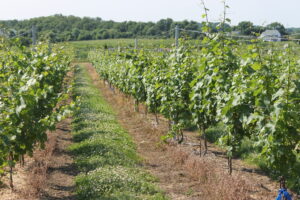Sweet Corn
European corn borer (ECB) moth catches are largely unchanged; remaining at low levels throughout the state. Only occasional feeding in sweet corn has been detected by field personnel.
The highest nightly trap catches of ECB for the week ending 08/24/22 are as follows:
| Dayton 1 | Matawan 1 |
| East Vineland 1 | New Egypt 1 |
| Farmingdale 1 | Pennington 1 |
| Folsom 1 | Princeton 1 |
 Articles in this section contain information helpful to the NJ commercial organic grower.
Articles in this section contain information helpful to the NJ commercial organic grower.
 ave an idea you would like to try on your farm that is related to sustainable agriculture?
ave an idea you would like to try on your farm that is related to sustainable agriculture? 
